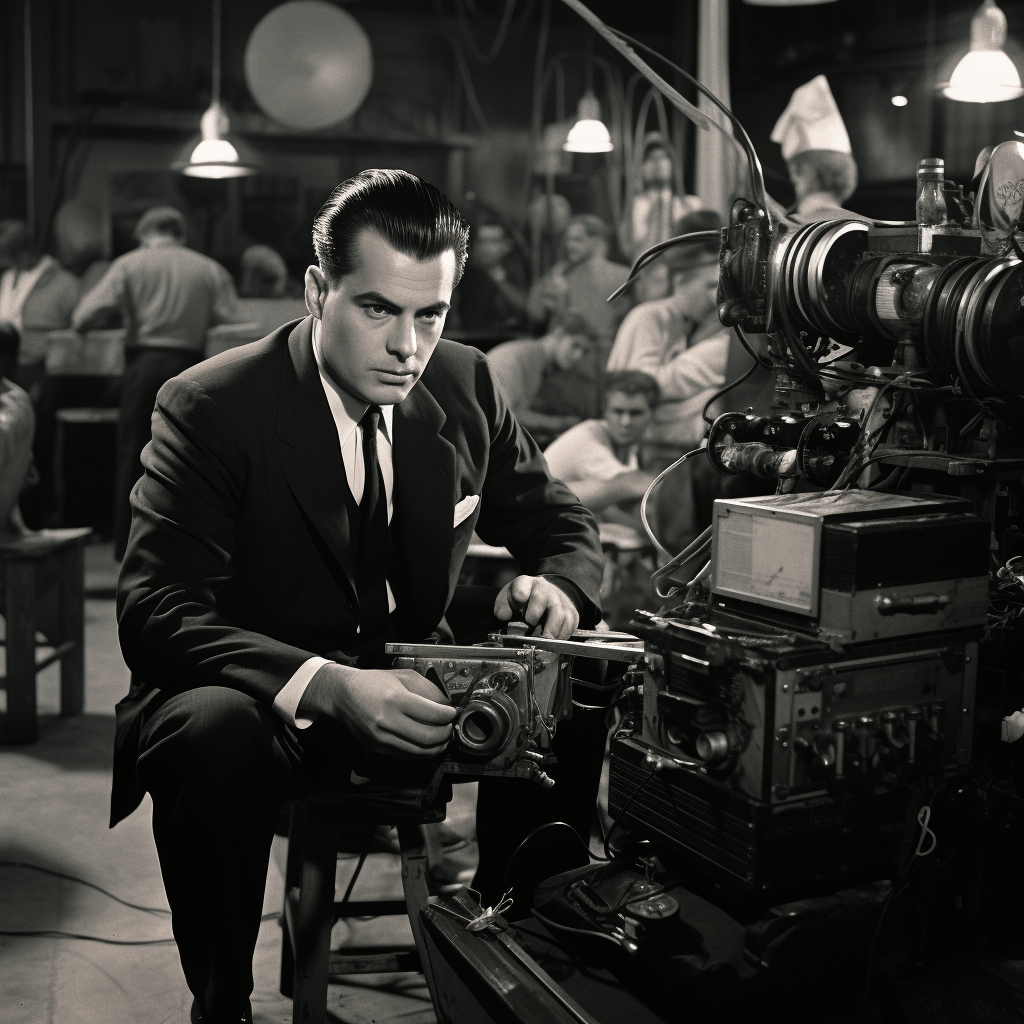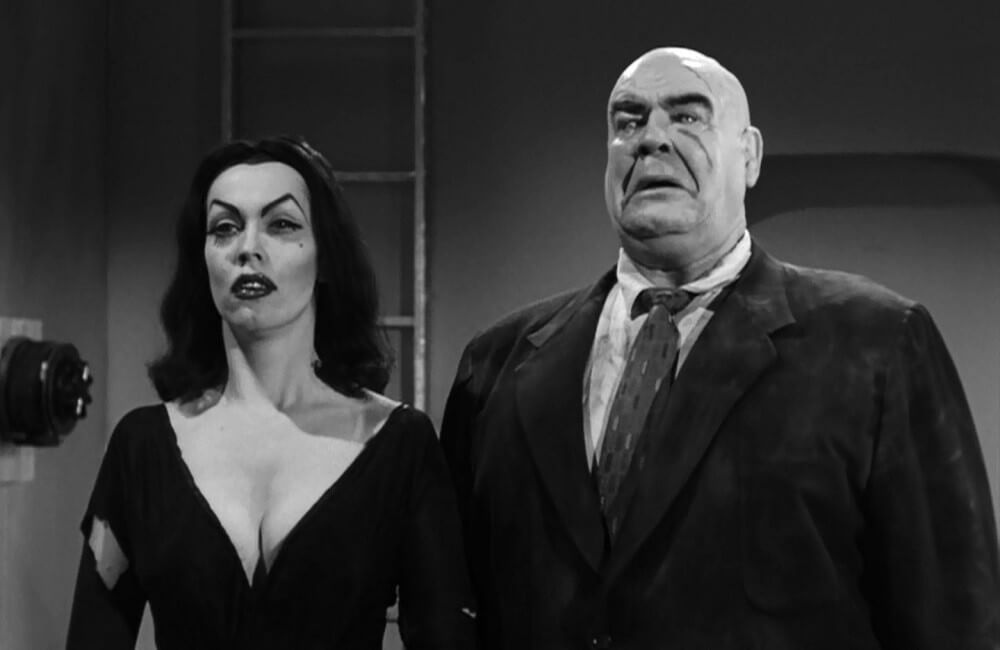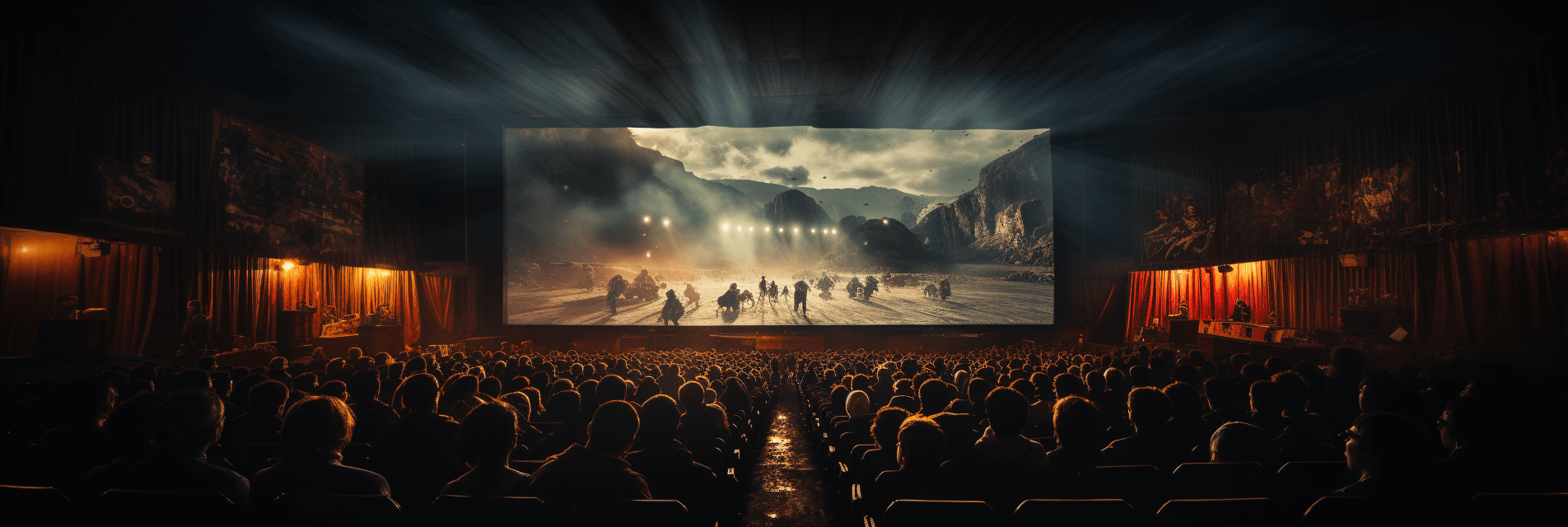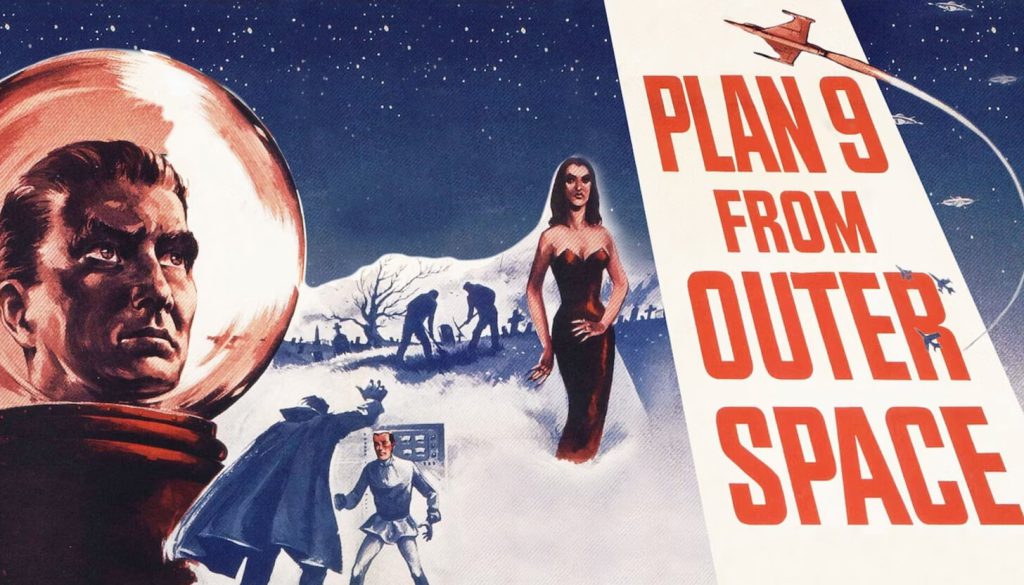The Legacy and Influence of “Plan 9 from Outer Space”: From Flop to Cult Classic
Every so often, a film emerges that, despite its initial reception, manages to carve a unique niche for itself in cinematic history. “Plan 9 from Outer Space” is one such film. Directed by the enigmatic Ed Wood, this 1959 production is often hailed as the “worst movie ever made.” Yet, its very flaws have rendered it an iconic piece of cinema, celebrated by fans and critics alike for its campy charm and unintentional humor.
Initial Reception: A Rocky Start
Upon its release, “Plan 9 from Outer Space” was met with scathing reviews. Critics lambasted its incoherent plot, amateurish production values, and often laughable special effects. The film’s budgetary constraints were evident, leading to glaring continuity errors and questionable casting choices.
The Cult Following: A Phoenix Rises
Despite its rocky start, the film began to gain traction in the 1970s and 1980s. Midnight movie screenings, often accompanied by audience participation reminiscent of “The Rocky Horror Picture Show”, catapulted “Plan 9” into cult status. But what was it about this ostensibly “bad” movie that resonated with audiences?
- Charm in Imperfection: The film’s very flaws became its strengths. Audiences reveled in its campiness, finding joy in its unintentional humor.
- Ed Wood’s Passion: Despite the film’s shortcomings, Wood’s genuine passion for filmmaking shone through, making it a testament to the spirit of indie cinema.
- Iconic Lines and Scenes: Certain scenes and dialogues, in their absurdity, became instantly memorable, often quoted by fans and referenced in other media.
Legacy in Modern Culture
“Plan 9 from Outer Space” has left an indelible mark on pop culture. It has inspired countless parodies, documentaries, and even a biographical film about Ed Wood, directed by Tim Burton. The film’s legacy serves as a reminder that sometimes, in the world of cinema, perfection isn’t the only path to immortality.
In conclusion, “Plan 9 from Outer Space” stands as a beacon for filmmakers and enthusiasts alike, proving that with passion and a unique vision, any film, regardless of its initial reception, can find its place in the annals of cinematic history.
Ed Wood’s Vision and the Making of “Plan 9 from Outer Space”: Behind the Scenes of a Cult Phenomenon
When discussing “Plan 9 from Outer Space”, it’s impossible not to delve into the mind of its creator, Ed Wood. Often dubbed the “worst director of all time”, Wood’s undying passion for filmmaking and his unique vision set the stage for what would become one of the most talked-about films in cinematic history.

The Visionary: Ed Wood
Wood’s love for cinema was evident from a young age. Despite facing numerous challenges, including budgetary constraints and a lack of formal training, he was determined to bring his visions to life. “Plan 9 from Outer Space” was a testament to this unwavering dedication. While the film’s narrative was often deemed incoherent, it was clear that Wood had a story he was burning to tell.
Challenges in Production
Creating “Plan 9” was no easy feat. With a shoestring budget, Wood had to get creative. This led to some of the film’s most iconic quirks:
- Cardboard Tombstones: Due to budget constraints, many of the film’s props were makeshift, leading to the infamous wobbling tombstones.
- Day-to-Night Filming: Scenes shot in broad daylight were presented as nighttime, adding to the film’s surreal atmosphere.
- Stock Footage: To save on costs, Wood often incorporated unrelated stock footage, leading to some jarring, yet memorable, scene transitions.
The Passion Behind the Camera
Despite its many flaws, “Plan 9” was a labor of love. The cast and crew, many of whom were close friends of Wood, believed in his vision. This camaraderie was palpable on set, with everyone from the lead actors to the makeup artists pouring their heart and soul into the project.
“Plan 9 from Outer Space” may not have been a masterpiece in the traditional sense, but it was undeniably a product of passion. Ed Wood’s unwavering commitment to his craft, even in the face of adversity, serves as an inspiration to filmmakers everywhere. In the end, it’s not the budget or the accolades that define a film’s legacy, but the heart and soul poured into it.
The Cast and Characters: A Deep Dive into the Stars of “Plan 9 from Outer Space” and Where They Are Now

While “Plan 9 from Outer Space” is often remembered for its eccentric director and unique production quirks, the cast played an integral role in bringing Ed Wood’s vision to life. Let’s journey through the film’s memorable characters and the actors behind them, exploring their contributions to the movie and their subsequent careers.
Bela Lugosi: The Legendary Dracula
Bela Lugosi, best known for his iconic portrayal of Dracula, played a mysterious old man in “Plan 9”. Tragically, Lugosi passed away during the film’s production. Wood, determined to include his friend in the film, used previously shot footage of Lugosi and employed a stand-in for other scenes. Lugosi’s legacy in Hollywood is undeniable, with “Plan 9” being one of his final screen appearances.
Vampira and Tor Johnson: The Unforgettable Duo
Maila Nurmi, popularly known as Vampira, brought a gothic allure to her role as the reanimated wife. Her unique look and eerie demeanor made her character one of the film’s standout elements. Following “Plan 9”, Vampira remained a cult figure, influencing generations of goth culture.
Tor Johnson, a former professional wrestler, played the lumbering Inspector Clay. His imposing physique and distinct look made him a memorable presence in the film. Johnson continued to work in B-movies, often collaborating with Wood.
The Supporting Cast: Unsung Heroes
Actors like Gregory Walcott, Mona McKinnon, and Tom Keene played pivotal roles, bringing depth to the film’s narrative. While they might not have achieved the same level of fame as Lugosi or Vampira, their contributions to “Plan 9” and other films of the era are noteworthy.
| Gregory Walcott | Jeff Trent | Continued acting in films and TV shows until the 1990s. |
| Mona McKinnon | Paula Trent | Worked in a few more films before retiring from acting. |
| Tom Keene | Col. Tom Edwards | Acted in several more films before his passing in 1963. |
| Dudley Manlove | Eros, the alien | Appeared in a handful of films and TV episodes in the 1960s. |
| Joanna Lee | Tanna, the female alien | Transitioned to screenwriting and won awards for her work in television. |
| John Breckinridge | The Ruler, alien leader | Had minor roles in a few other films and TV shows. |
| Paul Marco | Officer Kelton | Continued to act in several of Ed Wood’s films and other projects. |
| Lyle Talbot | General Roberts | Had a prolific career in both film and television, spanning several decades. |
| Conrad Brooks | Patrolman Jamie | Worked in numerous low-budget films, often collaborating with Ed Wood. |
| David De Mering | Navigator | His acting career was limited, with “Plan 9” being one of his few film roles. |
| Norman Field | Dr. Mason | Appeared in numerous films and TV shows throughout the 1940s and 1950s. |
| Bill Ash | Second Stretcher Bearer | Had minor roles in a few other films during the 1950s. |
| Gloria Dea | Corpse | “Plan 9” remains her most recognized role, with limited filmography thereafter. |
| Ben Frommer | Undead Ghoul | Played various roles in films and TV shows, often as background characters or in minor roles. |
| Maila Nurmi | Vampire Girl | Became a cult figure known as Vampira, influencing generations of goth culture. |
| Carl Anthony | Patrolman Larry | Appeared in a few other films in the 1950s and 1960s. |
| Reverend Lynn Lemon | Opening Narrator | Primarily known for his role in “Plan 9”, with limited other filmography. |
| Tom Mason | Dr. Manley’s Double | Mostly remembered for his stand-in role in “Plan 9”, with few other known roles. |
| Tony McCoy | Second Pilot | Worked in a handful of films in the 1950s, with “Plan 9” being his most notable. |
The cast of “Plan 9 from Outer Space” brought a unique blend of talent, charisma, and dedication to the project. Their performances, whether intentionally comedic or genuinely heartfelt, added layers to the film, making it the cult classic it is today.
Comparing “Plan 9 from Outer Space” to Other Sci-Fi Classics of its Era
The 1950s was a golden era for science fiction cinema. With the Cold War tensions and the space race in full swing, filmmakers tapped into the collective anxieties and hopes of the time, producing a slew of iconic films. “Plan 9 from Outer Space”, while often dubbed the “worst movie ever made”, stands as a unique testament to this period. But how does it compare to other sci-fi classics of its era?
The Day the Earth Stood Still (1951)
Directed by Robert Wise, “The Day the Earth Stood Still” is a tale of an alien visitor and his robot enforcer landing on Earth to deliver a warning to humanity. Unlike “Plan 9”, which leans heavily into B-movie territory, this film is polished, with a strong message about peace and understanding.
Forbidden Planet (1956)
Another titan of 1950s sci-fi, “Forbidden Planet” boasts impressive special effects for its time and a plot inspired by Shakespeare’s “The Tempest”. While “Plan 9” had its charm, it lacked the budget and technical prowess showcased in “Forbidden Planet”.
Invaders from Mars (1953)
“Invaders from Mars” taps into the paranoia of the era, with a young boy discovering that aliens are taking over the minds of people. Both this film and “Plan 9” share themes of alien invasion, but their execution and reception were vastly different.
Them! (1954)
While “Plan 9” had its reanimated dead, “Them!” presented giant irradiated ants as its central threat. A commentary on the dangers of nuclear testing, “Them!” was both a commercial and critical success, contrasting sharply with the reception of Ed Wood’s magnum opus.
| Film | Central Theme | Reception |
|---|---|---|
| Plan 9 from Outer Space | Alien resurrection of the dead | Cult classic, often dubbed the “worst movie ever made” |
| The Day the Earth Stood Still | Alien peace envoy | Critical acclaim, regarded as a classic |
| Forbidden Planet | Space exploration and ancient alien civilizations | Commercial and critical success |
| Invaders from Mars | Alien mind control | Mixed reviews, but has since gained a cult following |
| Them! | Giant irradiated ants | Commercial and critical success |
While “Plan 9 from Outer Space” may not have received the accolades or recognition of its contemporaries, its unique charm and the passion of its creators have ensured its place in cinematic history. It stands as a testament to the diverse range of storytelling and filmmaking that the 1950s sci-fi era had to offer.
The Legacy of Bela Lugosi in “Plan 9 from Outer Space” and Beyond
Bela Lugosi, the iconic Hungarian-American actor, is best remembered for his portrayal of Count Dracula in the 1931 classic “Dracula”. However, his involvement in “Plan 9 from Outer Space” remains one of the most intriguing aspects of his career. This section delves into Lugosi’s contribution to “Plan 9” and his lasting legacy in the world of cinema.

Unexpected Departure: Lugosi’s Role in “Plan 9”
Ed Wood, the director of “Plan 9”, was a personal friend of Lugosi. Before Lugosi’s untimely death in 1956, Wood had shot some footage of the actor for a different project. In a move that showcased both his resourcefulness and his deep admiration for Lugosi, Wood incorporated this footage into “Plan 9”, ensuring that the film would be Lugosi’s final curtain call.
From Dracula to Cult Stardom
While Lugosi’s portrayal of Dracula cemented his place as a horror icon, his later career was marked by a series of B-movies, often with limited budgets and eccentric plots. “Plan 9”, with its unique blend of sci-fi and horror, is a fitting representation of this phase of his career. Yet, despite the challenges, Lugosi’s charisma and talent shone through, earning him a dedicated fanbase that persists to this day.
- White Zombie (1932): Often considered the first feature-length zombie film, Lugosi’s portrayal of Murder Legendre, a voodoo master, is both chilling and captivating.
- The Black Cat (1934): Teaming up with fellow horror legend Boris Karloff, Lugosi delivers a memorable performance in this Edgar Allan Poe adaptation.
- Bride of the Monster (1955): Another collaboration with Ed Wood, this film sees Lugosi in the role of Dr. Eric Vornoff, a scientist with a penchant for creating monsters.
Lugosi’s Legacy
While “Plan 9 from Outer Space” is often ridiculed for its perceived shortcomings, it serves as a poignant reminder of Lugosi’s dedication to his craft. Even in his final years, plagued by personal and professional challenges, he remained a consummate professional, bringing gravitas to even the most outlandish roles. Today, Lugosi’s influence can be seen in the works of filmmakers and actors who draw inspiration from his unparalleled ability to captivate audiences, regardless of the material.
“Plan 9 from Outer Space” in Popular Culture: References, Parodies, and Homages
Despite its initial reception as one of the “worst films ever made,” “Plan 9 from Outer Space” has since been embraced by audiences and critics alike for its campy charm and unintentional humor. Its unique place in cinematic history has led to numerous references, parodies, and homages in popular culture. This section explores the film’s enduring influence and its transformation from a cinematic misstep to a beloved cult classic.
Television References
From animated series to late-night talk shows, “Plan 9” has been a favorite target for comedic references. Shows like “The Simpsons,” “Futurama,” and “Saturday Night Live” have all poked fun at the movie’s infamous scenes, further embedding its legacy in the public consciousness.
Music and “Plan 9”
The film’s title and themes have inspired various musical acts over the years. Bands have named themselves after the movie, and song lyrics often allude to its iconic moments. The punk band “Plan 9” is a notable example, drawing both their name and aesthetic from the film’s quirky vibe.
Modern Cinema and Homages
Contemporary filmmakers, especially those in the horror and sci-fi genres, often pay tribute to “Plan 9”. Whether through subtle nods in dialogue or overt recreations of its most memorable scenes, the film’s influence is evident in a range of movies, from indie projects to blockbuster hits.
- “Ed Wood” (1994): Directed by Tim Burton, this biographical film about the life of Ed Wood prominently features the making of “Plan 9 from Outer Space”. Johnny Depp’s portrayal of Wood brings a touching humanity to the eccentric director, and the film serves as a love letter to both Wood and his most infamous creation.
- “Plan 9” (2015): A modern reimagining of the original, this film pays homage while updating the story for a new generation.
Merchandise and Fandom
From T-shirts to posters, the imagery of “Plan 9 from Outer Space” has been widely adopted by fans and merchandisers alike. Annual screenings, especially around Halloween, have become events where fans gather to celebrate the film, often dressing up as their favorite characters and reciting lines in unison.
While “Plan 9 from Outer Space” may never shake its reputation as a “so-bad-it’s-good” film, its impact on popular culture is undeniable. Its journey from box office flop to cult phenomenon serves as a testament to the unpredictable nature of cinematic legacies.
The Impact of Low-Budget Filmmaking: Lessons from “Plan 9 from Outer Space”
Low-budget filmmaking has always been a challenging endeavor, often requiring filmmakers to think outside the box and utilize creative solutions to bring their visions to life. “Plan 9 from Outer Space” stands as a testament to the trials and tribulations of working within tight financial constraints. However, it also serves as a beacon of inspiration, showcasing the potential for such films to leave a lasting impact, regardless of their initial reception or production challenges.
Ingenuity Over Budget
While “Plan 9 from Outer Space” is often criticized for its apparent lack of polish, it’s essential to recognize the ingenuity behind many of its choices. From cardboard tombstones to reused footage, the film is a masterclass in making the most of limited resources. This resourcefulness is a hallmark of indie filmmaking, where constraints often lead to unexpected and innovative solutions.
The Power of Passion
Ed Wood’s unwavering belief in his project, despite its many challenges, is a testament to the power of passion in filmmaking. His dedication serves as a reminder that a filmmaker’s love for their work can drive them to overcome even the most significant obstacles. This passion often resonates with audiences, leading to a cult following that appreciates the heart and soul poured into a project, even if it lacks the polish of big-budget productions.
Legacy Beyond Production Value
While high production values and star-studded casts can contribute to a film’s success, “Plan 9 from Outer Space” proves that a movie’s legacy isn’t solely tied to its budget. Its enduring popularity highlights the importance of storytelling, character development, and thematic depth over mere visual spectacle.
Lessons for Modern Filmmakers
- Embrace Constraints: Limitations can lead to unique and creative solutions that set a film apart.
- Stay True to Your Vision: While feedback is essential, it’s crucial to remain true to your original vision and not be swayed by external pressures.
- Passion is Contagious: A genuine love for the craft can inspire both cast and crew, leading to a more cohesive and dedicated team.
In conclusion, “Plan 9 from Outer Space” offers invaluable insights into the world of low-budget filmmaking. Its legacy serves as a beacon of hope for indie filmmakers, proving that with passion, dedication, and a touch of ingenuity, any film, regardless of its budget, can leave a lasting mark on cinematic history.
Audience Reactions Then and Now: How Perceptions of the Film Have Evolved

When “Plan 9 from Outer Space” was first released in 1959, it was met with a mix of bewilderment, amusement, and, in some cases, outright disdain. Fast forward to today, and the film enjoys a cult status, celebrated for its quirks, flaws, and undeniable charm. But how did this transformation in perception occur? Let’s delve into the audience reactions, both past and present, to understand the film’s unique journey through the annals of cinematic history.
Initial Reception: A Bumpy Start
Upon its release, “Plan 9 from Outer Space” was largely panned by critics and audiences alike. Many found its plot convoluted, its special effects laughable, and its acting over-the-top. The film struggled to find its footing in mainstream cinema, with many dismissing it as a failed attempt at science fiction.
The Rise of Cult Cinema
As the years went by, a curious phenomenon began to emerge. The very elements that were once ridiculed became points of celebration for a growing subset of film enthusiasts. The movie’s unintentional humor, combined with its earnestness, struck a chord with those who appreciated cinema that dared to be different. “Plan 9 from Outer Space” began to be screened at midnight showings, drawing in crowds who reveled in its eccentricities.
Modern Perceptions: Embracing the Flaws
In today’s age of high-definition visuals and CGI wonders, one might expect a film like “Plan 9 from Outer Space” to be forgotten. Yet, it remains more popular than ever. Modern audiences, equipped with a broader understanding of film history and a penchant for nostalgia, view the film with a mix of affection and amusement. It serves as a reminder of a bygone era, where passion often trumped polish, and where imperfections could become endearing qualities.
| Time Period | General Reaction |
|---|---|
| 1959 – 1960s | Mostly negative, with criticisms focused on plot and production values. |
| 1970s – 1980s | Emergence as a cult classic, with midnight screenings and a growing fanbase. |
| 1990s – Present | Recognition as a unique piece of cinematic history, with a mix of affection and amusement. |
The journey of “Plan 9 from Outer Space” from cinematic pariah to beloved cult classic is a testament to the ever-evolving nature of audience perceptions. It underscores the idea that films, much like art, can be reinterpreted and rediscovered by successive generations, each bringing its own unique perspective to the table.
Reviving “Plan 9”: Modern Interpretations and Adaptations of the Classic Film
While “Plan 9 from Outer Space” may have had a rocky start upon its initial release, its legacy has only grown with time. Today, the film is not just remembered as a cult classic but has also inspired a slew of modern interpretations and adaptations. These new takes on the film range from theatrical performances to digital reimaginings, each paying homage to the original while adding a contemporary twist.
Theatrical Adaptations
Over the years, several theater groups have taken on the challenge of adapting “Plan 9” for the stage. These productions often infuse the story with a fresh dose of humor, playing up the film’s unintentionally comedic moments. With elaborate set designs and innovative use of lighting, these adaptations have been successful in drawing in both fans of the original film and new audiences alike.
Digital Reimaginings
In the age of technology, “Plan 9” has also found its way into the digital realm. From fan-made animations to full-fledged video game adaptations, the story of aliens resurrecting the dead to prevent humanity from creating a doomsday weapon has been reimagined for the tech-savvy generation. These digital versions often offer interactive experiences, allowing users to step into the world of “Plan 9” and shape its narrative.
Documentaries and Retrospectives
The story behind the making of “Plan 9 from Outer Space” is as intriguing as the film itself. Several documentaries have delved into the challenges faced during its production, the vision of Ed Wood, and the film’s journey to cult status. These retrospectives offer a deep dive into the film’s history, its impact, and its enduring legacy.
| Type | Description |
|---|---|
| Theatrical Adaptations | Stage versions with a contemporary twist, often emphasizing the film’s comedic elements. |
| Digital Reimaginings | Animations, video games, and other digital adaptations offering interactive experiences. |
| Documentaries | Deep dives into the film’s history, its making, and its journey to becoming a cult classic. |
As we reflect on the various modern interpretations and adaptations of “Plan 9 from Outer Space”, it’s evident that the film’s charm and uniqueness continue to inspire creators across different mediums. Whether it’s a stage play, a digital game, or a documentary, the spirit of “Plan 9” lives on, proving that true classics never fade away.
Frequently Asked Questions
Is “Plan 9 from Outer Space” based on a book?
No, “Plan 9 from Outer Space” is not based on a book. It was an original screenplay written by Ed Wood.
What exactly is Plan 9?
Plan 9 is the aliens’ scheme to resurrect Earth’s dead to prevent humanity from creating a doomsday weapon that could destroy the universe. It’s the ninth plan after the first eight plans failed.
Was this really Bela Lugosi’s last film?
Yes, “Plan 9 from Outer Space” features footage of Bela Lugosi that was shot before his death in 1956. The film was released in 1959, making it his posthumous appearance. However, the majority of his role was played by a stand-in due to the limited footage available.
How long is “Plan 9 from Outer Space”?
“Plan 9 from Outer Space” has a runtime of 79 minutes.
Why is it called “Plan 9 from Outer Space”?
The title refers to the aliens’ ninth plan to save the universe from humanity. The “from Outer Space” part emphasizes the extraterrestrial origin of the plan and the beings executing it.
Is the film considered a commercial success?
No, “Plan 9 from Outer Space” was not a commercial success upon its initial release. However, it later gained a cult following and is now often referred to as the “worst movie ever made,” which has contributed to its enduring popularity.

